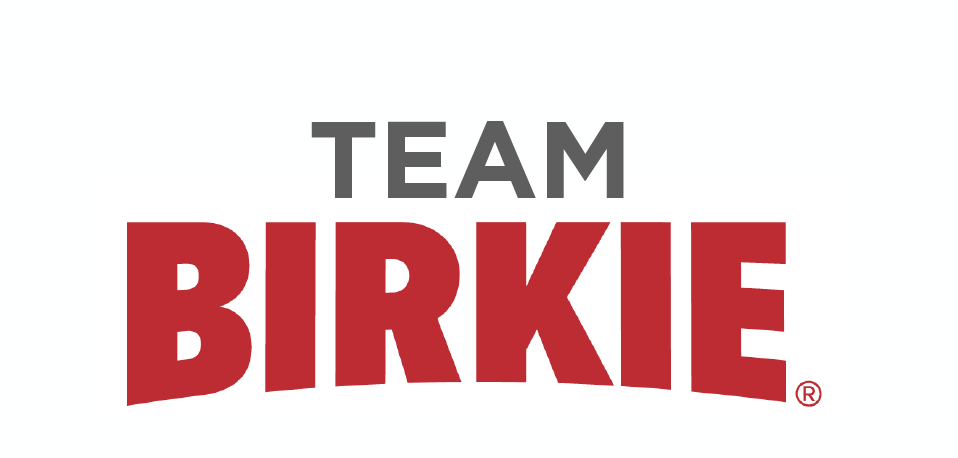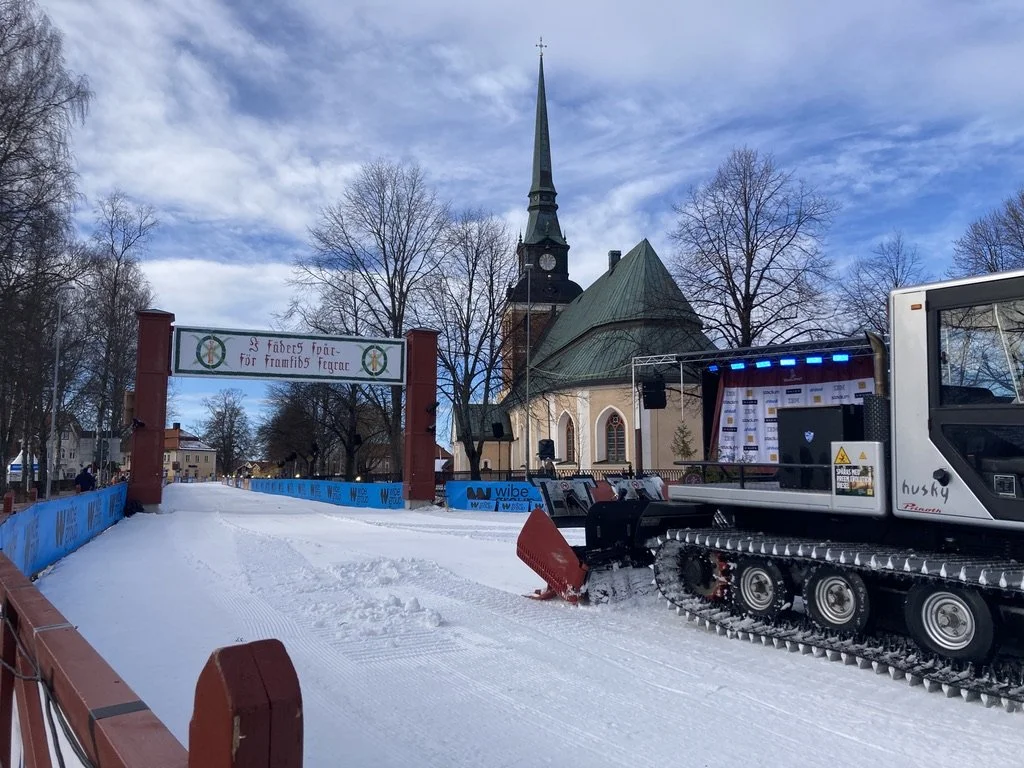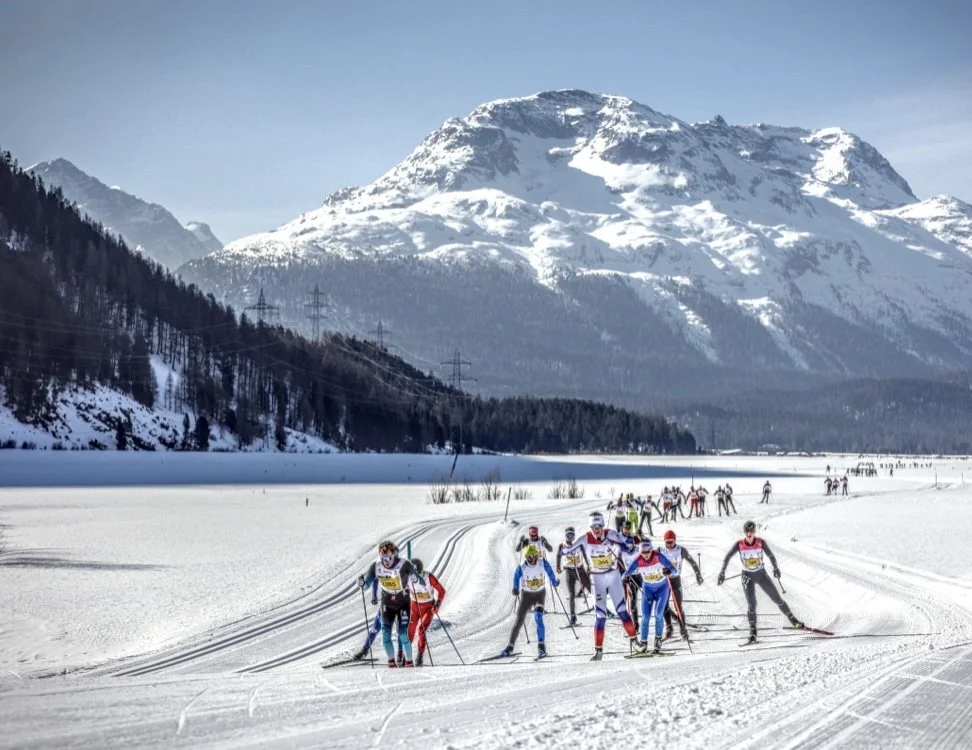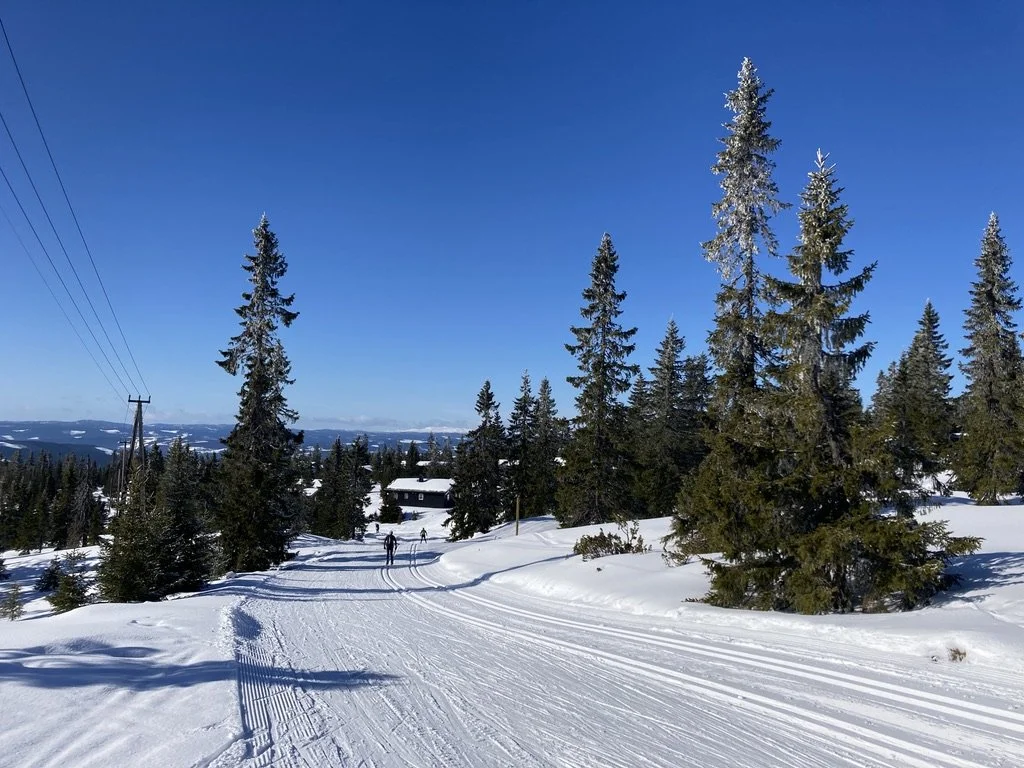Marathon Madness
For our team, the American Birkiebeiner (some might call it the "real Birkie") was an event that both brought us together and sent us outward once more on independent pathways. On that special weekend, we celebrated a range of successes and personal battles that took place in the Wisconsin northwoods between Cable and Hayward. It was so fun to be together as a team in the energetic leadup to the race, out on the course, and in the returned chaos of downtown Hayward afterwards. While my own Birkie experience was characterized by 30k of sustained cramping, I still look back on the weekend fondly because of how special the whole experience was.
The Birkie was only the first race in my one month tour of the world's most iconic marathon races. I may have started with the best, but Vasaloppet, the Engadin Skimarathon, and Birkebeinerennet each delivered their own unique experiences that I felt incredibly fortunate to have been a part of! Just two days after the Birkie, I flew to Sweden and took a train up to Mora, the home of Vasaloppet.
Vasaloppet is a 90km classic race that, at the elite level, has become a full double pole race. That might sound crazy (it is), but it's a largely flat race. According to one of my hosts, Jörgen, in Mora: "You double pole uphill for the first 3k, but then the race is over". Sure. Over after 3k, and then you just ski 87 more kilometers for funsies.
Full disclosure: before Vasaloppet, I had never gone into a distance classic race intending only to double pole, and the farthest I had ever skied was 50k. Despite maybe being in over my head, my incredible hosts, Kerrin (former US ski team member, 2x Vasaloppet winner and only american to have won the race) and Jörgen (Swedish, so naturally also an accomplished skier), prepared me to succeed in every way possible.
Despite a crazy early start time, 15,000 people starting at once, and the logistics of a point to point race, I was super surprised by how smoothly everything at Vasaloppet ran. Everything through the start, even the chaos of sending everyone up a 3k climb immediately, was relatively relaxed. After the climb, the race settled into the most fun pack skiing I have ever done. The draft train dynamics felt like a high speed cycling race. The race was beautiful, and included some cool bonus experiences like skiing with Marit for a good part of it. I was surprisingly comfortable double poling the whole way as well! For that, I had to give credit to my training with Team Birkie, lucky race day conditions, and some fast skis prepped by the Madshus team. I finished in 4:08, and only bonked right before the finish! I've never felt such exhaustion, or soreness in such strange places after a race, but it was all so worth the experience of that incredible event.
I didn't have much time after Vasaloppet to get to Switzerland for the Engadin. I was again lucky to have some great personal connections from growing up in the Minnesota ski community that made logistics a breeze. Additionally, Katie Feldman from the Sun Valley Gold Team joined me in representing the US elite skiing scene. We were well prepared for the race by our knowledgeable semi-local hosts, the Cattaneo family, and spent the week logging some all time scenic skis.
The actual race for Engadin was crazy, even though it was much smaller than Vasaloppet. Dario led the top pack out across the lakes at a pretty comfortable pace, but the moment we hit the main climb, things got real. The leading skiers attacked during the accordion effect traffic jam, the trail split into a braided choose-your-own adventure network through the trees, and we collided with the womens' elite pack. The long climb slowly mediated the chaos and created some packs. By the time we reached the "mattress hill" descent, my pack was still large enough to make for the craziest race descent of my life. I was tucked at full speed in a pack of 50 people hurtling down the equivalent of an icy tree run at an alpine resort on my skinny little skis. Oh, and there were also random people walking around between said trees that I had to dodge. Insane, but so fun! The rest of the race was similar pack skiing to Vasaloppet, and included some special skiing through village streets and other very Swiss scenery. At the finish, I knew it would be tough to find a more thrilling race experience than Engadin had delivered, but I still had one more to find out!
After a little visit to Zurich, I flew to Oslo, where I joined some skiing friends from my semester abroad in Norway for Birkebeinerennet. I spent most of the week before the race in Lillehammer, going for daily skis up at Sjusjøen, and enjoying some Norwegian nostalgia. The hype leading up to the race was much more subdued in Lillehammer than at Vasaloppet and Engadin, but on one of the days before, I did get to cheer on my Team Birkie teammate, Julie, who [was smart and] did the skate version of the race.
The snow situation was very complex leading up the race, and all of my Norwegian friends were double poling. Between peer pressure and some stupid confidence gained from Vasaloppet, I convinced myself to double pole again. Tough choice, I realized quickly on race day. The first 10km of the race was very uphill, especially so carrying my 10lb rice baby in my backpack. Then, instead of resting on the flat to mostly downhill plateau before the next mountain, a formidable headwind kept the work hard. The second mountain climb was brutal. I clearly had lost some double pole strength since Vasaloppet, and I was just plain tired. Thankfully the terrain for the last 20k relaxed a lot. Passing through the absolute party in Sjusjøen before descending to the finish certainly helped get me to the finish. The energy there was unlike any other race, and my teammates Julie and Zak were there to yell positive things at me from the crowd!
Birken concluded a crazy but awesome adventure. So much racing and traveling in so little time was exhausting, but also constantly exciting. I was ready for time off from racing, but the Team Birkie worldwide movement continued after leaving Norway! My teammate Andrew and I were able to meet up in Madrid shortly after to celebrate the racing and camaraderie we shared through Team Birkie this year, which was a great and coincidental final touch to my adventure.
Without a pre-existing pathway to VISMA races in the US, I'm so grateful that Team Birkie provided me with the opportunity to pursue these races that I've been dreaming of doing for a long time. After a season of racing many US marathons and these European ones, I have to say that the VISMA races offer a completely different style of marathon racing to anything we have in the US. I found the European races to be more fun for many reasons. I could write an entire other piece on that alone, but to summarize, I think the depth of competition in the European races provides competition that feels legitimate for everyone. I wasn't close to winning any of these races, but I was always skiing in packs with other professional athletes. Even though I was out of the prize money, this made me feel like I was a part of the competition. I hope that one of two things happens for US skiers going forward: either we are able to attract many more athletes from international levels to some of our domestic marathons, or teams like Team Birkie continue to encourage and offer more athletes pathways to race overseas in VISMA competitions.






